Perioperative safety lessons from COVID-19
The warning signs that were missed.
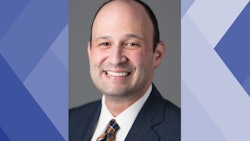
The COVID-19 pandemic caught the world by surprise. But a viral pandemic should have been an expected event, not a surprise.
“If anything should have surprised us, it is that we were not caught up in a viral pandemic sooner, given the ease and speed of modern travel,” said Jonathan B. Cohen, MD, Attending Anesthesiologist at the Moffit Cancer Center. “We had the 1918 influenza pandemic with tens of millions of deaths. And in the previous 20 years, we had two coronavirus epidemics, SARS in 2003 and MERS in 2012. These kinds of catastrophes are not events, they are processes that have an incubation period with warning signs that are not recognized or ignored.”
Catastrophes in the operating room are also processes, not stand-alone events, Dr. Cohen said. Just as in the case of COVID-19, the 9/11 attack in New York and the Columbia Shuttle disaster had warning signs that went unrecognized or ignored. OR disasters that go from wrong-site surgery to anesthesia-related deaths are preceded by seemingly minor problems.
“If you see that a patient got the wrong antibiotic or oxygen ran out mid-procedure, you’re not seeing isolated events, you are seeing safety processes that are not working,” he said. “Those are the early warning signs of a catastrophe to come.”
Dr. Cohen discussed the process failures that lead to catastrophe and ways to correct them during 2021’s virtual, self-directed learning session “What the COVID Pandemic Can Teach Us About Perioperative Safety.”
Humans tend to rely on the past to the predict the future, he said. If we don’t see catastrophic events, we tend to assume we won’t see them in the future, either. That makes sense statistically.
Catastrophic events, by definition, are rare. Wrong-site surgery, for example, occurred once every 112,994 surgeries before the World Health Organization Safe Surgery Checklist came into common use.
At that rate, an anesthesiologist could pass an entire career, medical school to retirement, without ever seeing, or being part of, a wrong-site surgery. Yet wrong-site surgery continues to occur. The organization, the hospital, needs to learn how to minimize, mitigate, and prevent safety events.
In retrospect, Dr. Cohen noted, the 1918 flu pandemic is familiar. An infectious respiratory virus, transmission escalated by global travel, public resistance to preventative measures such as mask-wearing, too-early reopening leading to increased transmission, and mortality.
But 1918 response leaders who learned those lessons could not inform pandemic response in 2019 and 2020. Nor did hospitals, public health institutions, and other organizations learn from the earlier experience. The 1918 pandemic produced no institutional learning or process changes that could reduce the risk of a similar future event, Dr. Cohen said.
“You must be a learning organization,” he said. “A learning organization embraces error and acknowledges problems, investigates problems, determines cause-and-effect relationships, and develops improved processes that are encoded into the ways the organization functions.”
Organizational learning is not inevitable or easy, he continued. Organizational knowledge is developed and passed on through both formal and informal channels. Formal channels include rules, procedures, programs, and policies. Informal channels are part of the organizational culture. Both of those channels can be diverted or blocked if the institution focus shifts from safety to competing values such as efficiency and cost savings.
Too many organizations are quick to institute new rules, policies, and standard operating procedures, and too slow to review those already in place. The result is too many rules and procedures, overly complex operating procedures that may not reflect the current realities of practice, and conflicting directives that discourages the organization from acknowledging new problems, much less investigating them or trying to improve processes.
“Rules are necessary, but insufficient, as a safety strategy,” Dr. Cohen said. “Knowing the why behind a rule is more important than the rule itself.”
Knowing the why behind a rule helps individuals embrace the uncertainty and change that comes with new information and incomplete information. The early days of COVID brought significant uncertainty surrounding transmission, prevention, and treatment. Knowledge changed on an almost-daily basis, as did recommendations.
But there was little effective explanation about why public health recommendations kept changing. That uncertainty generated significant resistance to masking, social distancing, avoiding crowds, and other measures that can effectively limit the spread of infectious disease.
“Uncertainty generates discomfort, but uncertainty is something anesthesiologists deal with every day,” Dr. Cohen said. “We must make decisions based on imperfect data and limited knowledge. If we embrace uncertainty instead of seeing it as a threat, we can improve our processes and reduce the risk of catastrophe.”
Visit Anesthesiology Today Annual Meeting Edition for more articles.


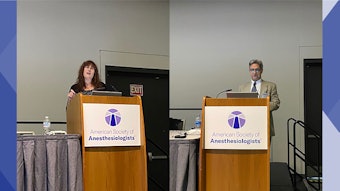



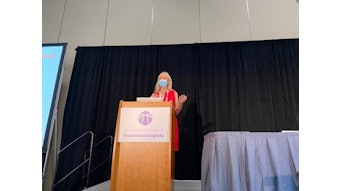
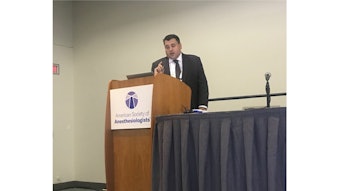

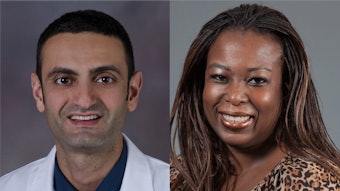

![Sharks[2]](https://img.ascendmedia.com/files/base/ascend/hh/image/2021/10/Sharks_2_.616369899ebe1.png?auto=format%2Ccompress&bg=fff&fill-color=fff&fit=fill&h=191&q=70&w=340)